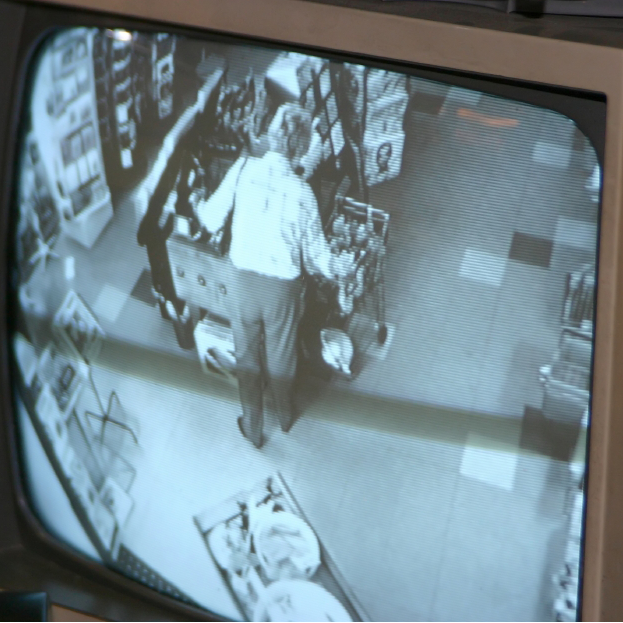All life on earth is insects. To a first-order approximation, there are no trees, no fish, no mammals, no birds, and no bacteria. If you round the fractions at all, everything living on this planet is some type of insect.
Stay with me on this. By analogy, all electronics are embedded systems. There are no supercomputers, no PCs, no Macs, no workstations. Everything with a microprocessor and some memory in it is an embedded system, usually a very small one that we don’t think much about. The average middle-class household has all sorts on embedded systems in the appliances, garage-door opener, thermostat, sprinkler timer, Internet router, TV set, and more. Thrown in a few cell phones and computers and you’ve got more computer power than NASA had for the moon landings.
Now, in a sci-fi movie, this would go horribly wrong. The machines would wake up some night and crawl around the house preparing their eventual takeover. We’d all awake to find ourselves tied down, Gulliver-like, by thin wires and ribbon cables. Cities would fall, civilizations would collapse, and we’d find ourselves in a dystopian world of blinking green and red LEDs. In the final scenes, our burly hero and his curvaceous sidekick would rescue humanity from the machines, and we’d be treated to a sappy lecture about how we sowed the seeds of our own destruction.
And you know what? They’re kinda right.
We are surrounding ourselves with electronic tattletales, and each one saps a tiny bit of humanity from society. Not a lot – it never comes all at once – but bit by bit, if you’ll pardon the expression.
You’ve probably been in a department store or hardware store and seen anti-shoplifting tags affixed to some items. Walk one of those puppies out through the exit gate without paying and the alarm goes off. Fair enough. I have no problem with that, and busting shoplifters is a good thing, although the cashiers at my local Home Depot have grown oblivious to the alarm there. Go ahead a grab a table saw; they won’t stop you.
We know it’s illegal to speed down a public street. But most of us apply the “ten percent rule:” we can drive a little bit over the limit as long as it’s not raining and we’re not in front of an elementary school or a police station, and that’s okay. If a cop happens to catch you, well, okay, that’s fair. Most of the time they’ll never see us, and we’re okay with that. Unless it’s that idiot speeding in front of me! Where’s a cop when you need one?
But let’s say there was an automated radar gun mounted on a pole along every single street in your town. They could clock every passing car and automatically send a ticket to the registered driver. The system would be 100% accurate, 100% efficient, and would enforce the laws 100% of the time. Better yet, it would free up the “wetware” police force for more high-value operations (like apprehending shoplifters with table saws).
And your reaction to that would probably be… hell, no! There’s something vaguely unfair about the idea of accurate and deserved speeding tickets. It’s like we’re supposed to play cat-and-mouse with the police. That’s part of the fun. Automating it seems somehow beyond the intent of the rules. More subtly, our traffic laws are created with the understanding that they’re not going to be observed all the time. If a certain corner can only be taken at 50 MPH, mark it for 35 MPH and assume people will actually drive it at around 40-ish.
Traffic lights fall somewhere in between these enforcement extremes. Unlike some countries where traffic lights are primarily just decorative, we don’t ignore stoplights and we expect them to be observed, every time, all the time. So, perfect application for automated enforcement, right? Yet when cities install automated cameras to catch red-light runners, there’s typically a big outcry.
Every modern car has an OBD II (onboard diagnostic, generation two) system installed that measures the position of the throttle and brake pedals, the speed of the car, and which way the steering wheel is pointed. It records this information (and much more) constantly, every time you’re in the car. In the event of an accident, forensic engineers can download the data from the car’s nonvolatile RAM to see if it suffered an equipment failure and, if so, start debugging it. Any programmer or hardware engineer is familiar with the concept.
So why not just use the OBD II to catch bad drivers? Simply make us turn over our onboard data once a month to the Cybernetic Traffic Authority and let them comb through the data looking for traffic infractions, speeding, misuse of the turn signal, sudden braking (which usually indicates a near-collision), weaving, overdue parking, and a variety of other sins and misdemeanors.
Hey, the data’s already all there. Yet somehow the whole idea seems creepy. Your car isn’t supposed to rat on you. Enforcement isn’t supposed to be black and white; there’s supposed to be an element of uncertainty. The police have to catch you first. Somehow, the whole idea seems undemocratic, like we’re entitled to fool the police or bend the rules a little bit as long as we can say, on those few occasions when we’re actually caught red-handed, that we’re sorry, officer, and we’ll never do it again. That has all been a part of society’s game. We want to enforce the rules (especially for that other guy), but we also want that gray fuzzy zone.
What if every item in the store had an anti-shoplifting tag? What if every street corner was under surveillance? What if every Internet connection was monitored and every phone line tapped? And what if we built all this ourselves?
Oh, wait a minute…





